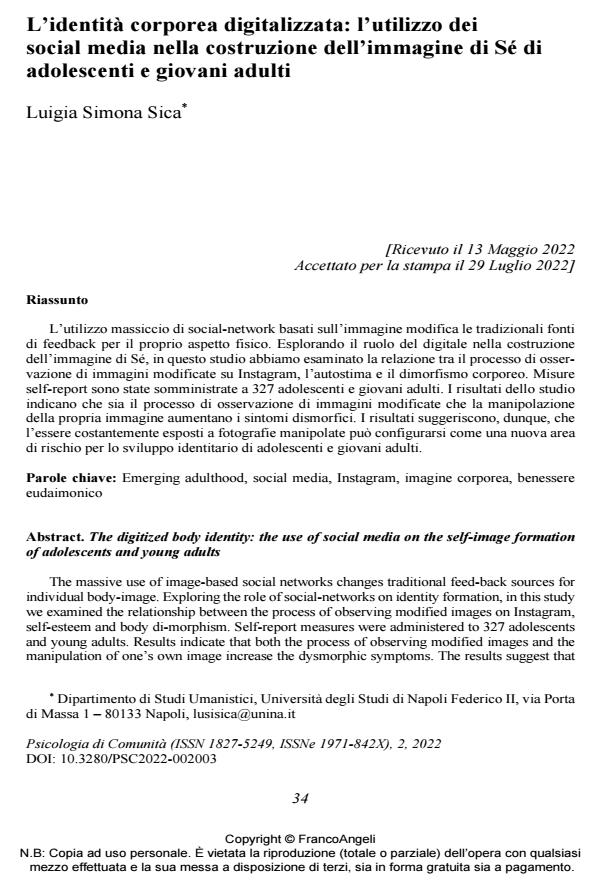The digitized body identity: the use of social media on the self-image formation of adolescents and young adults
Journal title PSICOLOGIA DI COMUNITA’
Author/s Luigia Simona Sica
Publishing Year 2022 Issue 2022/2
Language Italian Pages 22 P. 34-55 File size 257 KB
DOI 10.3280/PSC2022-002003
DOI is like a bar code for intellectual property: to have more infomation
click here
Below, you can see the article first page
If you want to buy this article in PDF format, you can do it, following the instructions to buy download credits

FrancoAngeli is member of Publishers International Linking Association, Inc (PILA), a not-for-profit association which run the CrossRef service enabling links to and from online scholarly content.
The massive use of image-based social networks changes traditional feed-back sources for individual body-image. Exploring the role of social-networks on identity formation, in this study we examined the relationship between the process of observing modified images on In-stagram, self-esteem and body di-morphism. Self-report measures were administered to 327 adolescents and young adults. Results indicate that both the process of observing modified images and the manipulation of one’s own image increase the dysmorphic symptoms. The re-sults suggest that being constantly exposed to manipulated photo-graphs can take the form of a new area of risk for the identity development of adolescents and emerging adults.
Keywords: Emerging adulthood, social media, Instagram, body image, eudaimonic well-being
Luigia Simona Sica, L’identità corporea digitalizzata: l’utilizzo dei social media nella costruzione dell’immagine di Sé di adolescenti e giovani adulti in "PSICOLOGIA DI COMUNITA’" 2/2022, pp 34-55, DOI: 10.3280/PSC2022-002003